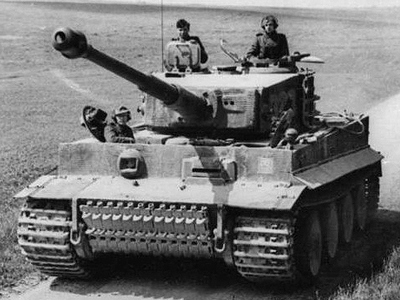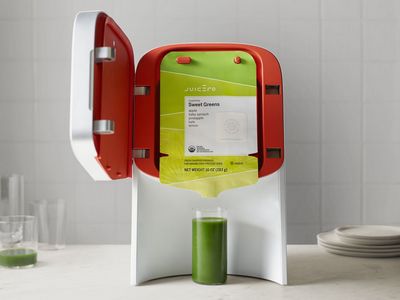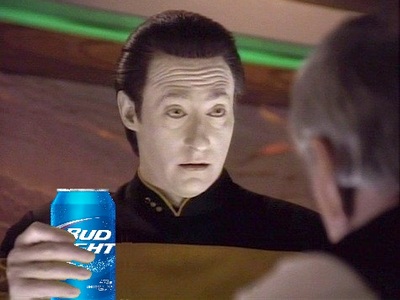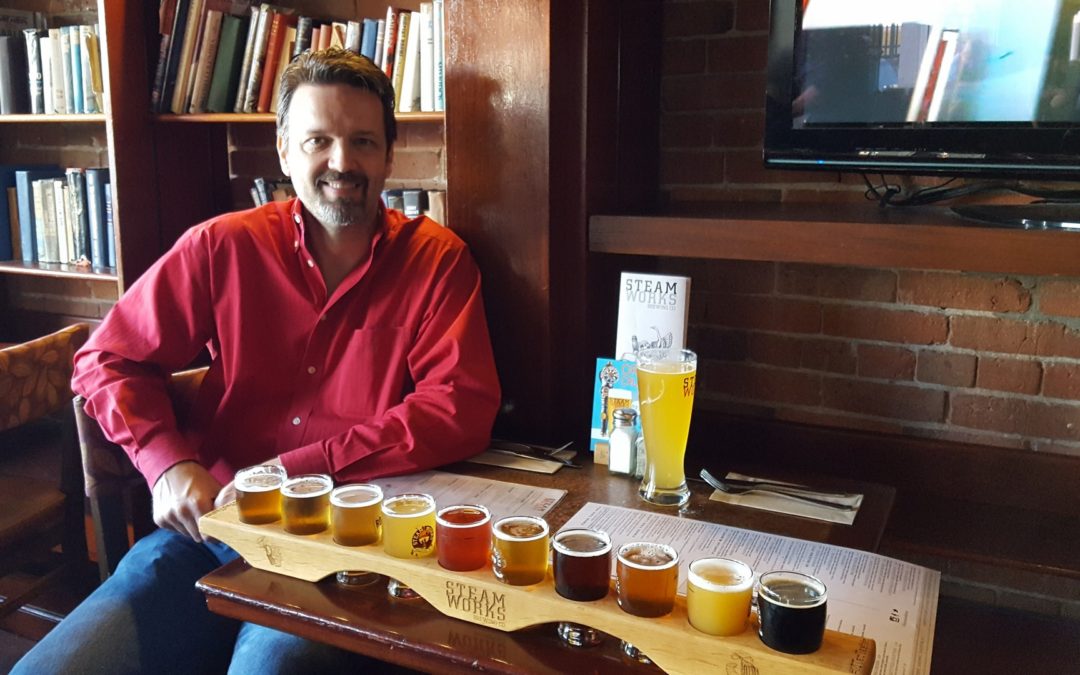I can’t believe this day finally arrived! I kept thinking that surely, sooner or later, I’d get to merge two of my favorite topics into a single post and today is the day. Thanks to AB InBev and Carlsberg, I finally get to write about engineering and beer.
Woohoo!
Please note that I don’t condone mixing beer and engineering (sometimes called “drinking and drafting”) at work. However, when you’re just writing about the two on a computer, I’m pretty sure it’s safe. Unless you drink too many and then start drunk messaging people on Facebook. But I promise not to do that.
Before we get to beer (woohoo!), let’s look at a few of the many overengineering failures from history.
The German Tiger I Tank
During World War II, the German military built the most impressive tank of the era. Compared to the Allies’ Sherman tank, the Tiger I (the Roman numeral was added later after the German military introduced the Tiger II) possessed more armor and firepower while still managing to be faster.
The Allied forces lost 4 Sherman tanks to every Tiger they managed to take down.

This seems like a lopsided fight until you realized that Germany was only able to build about 1,500 Tiger tanks compared to the Allies’ 50,000 Shermans. Over twice as expensive as the Sherman, the Tiger also took well over twice as long to build. On the battlefield, the Tiger I required a higher level of training by the operating crew than other tanks of the period and repairs were difficult – if not impossible – without mechanics specifically trained to repair the Tiger. Then, of course, there was the issue of high fuel consumption.
For all the downsides mentioned above, the designers of the Tiger I incorporated the one thing that justifies overengineering – safety. While I cannot find the numbers, the difference in lost tanks certainly correlates with a difference in lost lives. A crew member in a Tiger I was more likely to survive an encounter with an enemy tank than was a crew member in a Sherman tank.
The Juicero
This kitchen gadget sounds a little bit like one of my favorite TV shows from the 1970s, the Six Million Dollar Man: “We have the technology. We can make him better than he was. Better…stronger…faster.”
The Juicero possessed
- The strength to lift two Tesla automobiles
- The ability to scan QR codes
- Wifi access to the Internet to retrieve updates and product freshness information
- And a $700 price tag
This juicer – yes, juicer – was better, stronger, faster, and smarter than any juicer before it. Or so it seemed.
Tech bloggers likened the Juicero, with its individual-sized, all-natural juice pouches ready to be squeezed, to the Keurig coffee maker.

To use the device, you simply loaded a juice pouch into the Juicero, closed the lid, placed a glass under the spout, and pressed the start button. So, yes, it was just like my morning routine today with my Keurig. Then the magic began. The Juicero would scan the QR code on the pouch, determine the freshness of the product, and if fresh, a Tesla-lifting force would crush the pouch and deliver fresh juice into your glass.
Alternatively, you could just read the freshness date printed near the QR code and squeeze the juice out by hand. Yes, your two, little, non-Tesla lifting hands could also fill a glass with juice from the Juicero pouch. And squeezing it by hand was usually faster than using the device.
By this time, the Juicero had dropped $400 per unit, but that wasn’t enough to save the company or the nearly $120 million in funding raised by the company.
Electronic Receipt Exchange
Back in the mid-90s, my boss, Dan, had a genius plan for electronically trading warehouse receipts for bales of cotton. We would make a huge leap forward in technology with his plan. At the time, each warehouse receipt was created using a computer punch card. When someone sold a bale (or hundreds of bales), the owner delivered the physical cards to the new owner. Shipping was a slow, expensive, and cumbersome process. And you had to hope that the wind wasn’t blowing too bad when you stepped outside with them. By the way, we lived in West Texas. The wind is always blowing.
We strove to take the process online with a software masterpiece which included every bell and whistle imaginable. With Dan as the designer and me as the engineer, we labored over our masterpiece/monstrosity for the better part of two years.
During that time, a little startup known as EWR, Inc., popped up on our radar with a similar idea. We scoffed at their impertinence. They even approached some of our clients and showed them early demos. We told our clients to ignore those yahoos. Obviously, they had no idea what they were doing.
Then EWR launched version 1. It was laughable and did next to nothing. Meanwhile, we approached the halfway point in our project and knew we would slaughter them in the market.
EWR released version 2 and then 3. We’d had some setbacks, but we continued forward undeterred.
Closing in on two years, we finally finished. Behold, our brainchild! Unfortunately, EWR was already the industry standard. It did half of what ours did, but no one cared because it did the one thing – the only thing – they needed: it quickly and efficiently transferred electronic warehouse receipts.
We built a behemoth that did everything short of picking the cotton and pressing it into bales. And if we could have figured out the hardware interface, we would have added those features, too.
As French writer Antoine de Saint-Exupery said, “A designer knows he has achieved perfection not when there is nothing left to add, but when there is nothing left to take away.”
The Perfect Beer?

The world’s largest brewer, AB InBev, is planning to use artificial intelligence to create better beers through quality analysis and predictive taste modeling. Currently, the technology doesn’t exist to provide digital tasting, so humans are still involved in gathering this data. But, in the future, your cicerone might be named Mr. Data.
Danish brewer Carlsberg, on the other hand, says their computers can detect the difference in flavors, and they’re using this technology to improve the flavors of their beers.
To me, beer is art. I want my AI comparing sales figures and shipping methodologies. I don’t want it crafting my beer any more than I want it writing the ultimate novel or painting a landscape.
Certain creations – specifically those which have an aesthetic appeal – require a human touch.
The Final Takeaway
Sometimes we get carried away with technology. The fact that we can do something overrides the question of whether we need to do it or even should do it.
I agree with overengineering for safety. And, to be fair, the German Tiger took that approach. Otherwise, go for a minimum viable product and iteratively produce a better product as the market needs it. Or, you can do what you want and see what that gets you. But, be warned, the Tiger, Juicero, and the Cotton Network are no longer in operation. By comparison, EWR, Inc., is still the market standard and has expanded into other commodities besides cotton.

Author: Tracy Thomason
Agile project manager by day, craft beer drinker by night, and sometimes by day like when we visited the brewery in the featured photo above. Woohoo!
More posts by Tracy
Featured photo by Lisa Thomason (my wife) while we visited Steamworks Brewery in Vancouver, British Columbia, Canada.


Interesting article reminding me of oh-too-many jokes about engineers and scientists drinking beer. Agree that brewing beer is an art or better still, a craft. Note: As a member of the Board of Trustees for the Virginia Beer Museum (and fellow Toastmaster) I encourage you to write more frequently about the lessons learned from studying both crafts.
LOL, that sounds like a great idea. I’ll do it! Speaking of, I have a favor to ask of you but I’ll do that in email.
Loved this! (SIGH) Over-engineering happens much more frequently than I care to admit, And your statement; “Certain creations – specifically those which have an aesthetic appeal – require a human touch” is priceless.
Thanks Janet!